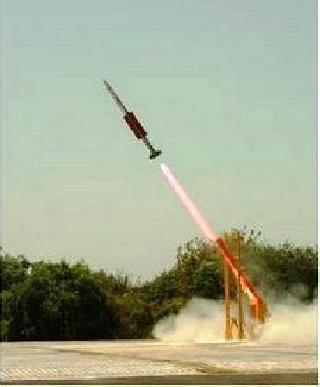
An unrelated file photo.
WASHINGTON (PTI): As the 'Mayan doomsday' predictions failed to pan out, NASA has come up with more good news - an asteroid feared to be on a collision course with the Earth no longer poses a threat to the planet.
Uncertainties about the orbit of the asteroid, known as 2011 AG5, previously allowed for a less than a 1 per cent chance it would hit the Earth in February 2040, NASA said.
Previously, scientists estimated that the risk of this 140-meter-diameter, about the length of two football fields, asteroid colliding with the Earth was as high as one in 500.
If this object were to collide with the Earth it would have released about 100 megatons of energy, several thousand times more powerful than the atomic bombs that ended World-War II. Statistically, a body of this size could impact the Earth on average every 10,000 years.
The observations, using the Gemini North telescope on Mauna Kea, Hawaii, were especially challenging, said team-member Richard Wainscoat.
"These were extremely difficult observations of a very faint object. We were surprised by how easily the Gemini telescope was able to recover such a faint asteroid so low in the sky," Wainscoat said in a Gemini statement.
The Gemini observations were made on October 20, 21, and 27, 2012, it said.
In addition to multiple observations since the asteroid's discovery, the team had also acquired images about two weeks earlier with the University of Hawaii 2.2-meter telescope also on Mauna Kea however, these data were all less conclusive and required confirmation.
Gemini was able to make the follow-up observations rapidly due to the observatory's scheduling flexibility and availability of several instruments at a moment's notice.
Astronomers David Tholen, Richard Wainscoat, Marco Micheli, and Garrett Elliott conducted the original observations and analysis of the data.
Further analysis was performed at NASA's Near-Earth Object Program Office at the Jet Propulsion Laboratory (JPL) in Pasadena, California.
The updated trajectory of 2011 AG5, based on the Gemini data, has a factor of 60 less uncertainty than the previous observations due in part to the increase in sampling points in the asteroid's orbit.
The original discovery was made from images obtained with the NASA-sponsored Catalina Sky Survey on Mt Lemmon in Arizona.
According to a press release issued by JPL, while this new result has reduced the interest in 2011 AG5, the experience gained by studying this object and conducting a contingency deflection analysis has demonstrated that astronomers, using NSF and NASA facilities, are well poised to detect and predict the trajectories of Earth-threatening asteroids in the future.
 Previous Article
Previous Article Next Article
Next Article













The Indian Air Force, in its flight trials evaluation report submitted before the Defence Ministry l..
view articleAn insight into the Medium Multi-Role Combat Aircraft competition...
view articleSky enthusiasts can now spot the International Space Station (ISS) commanded by Indian-American astr..
view article